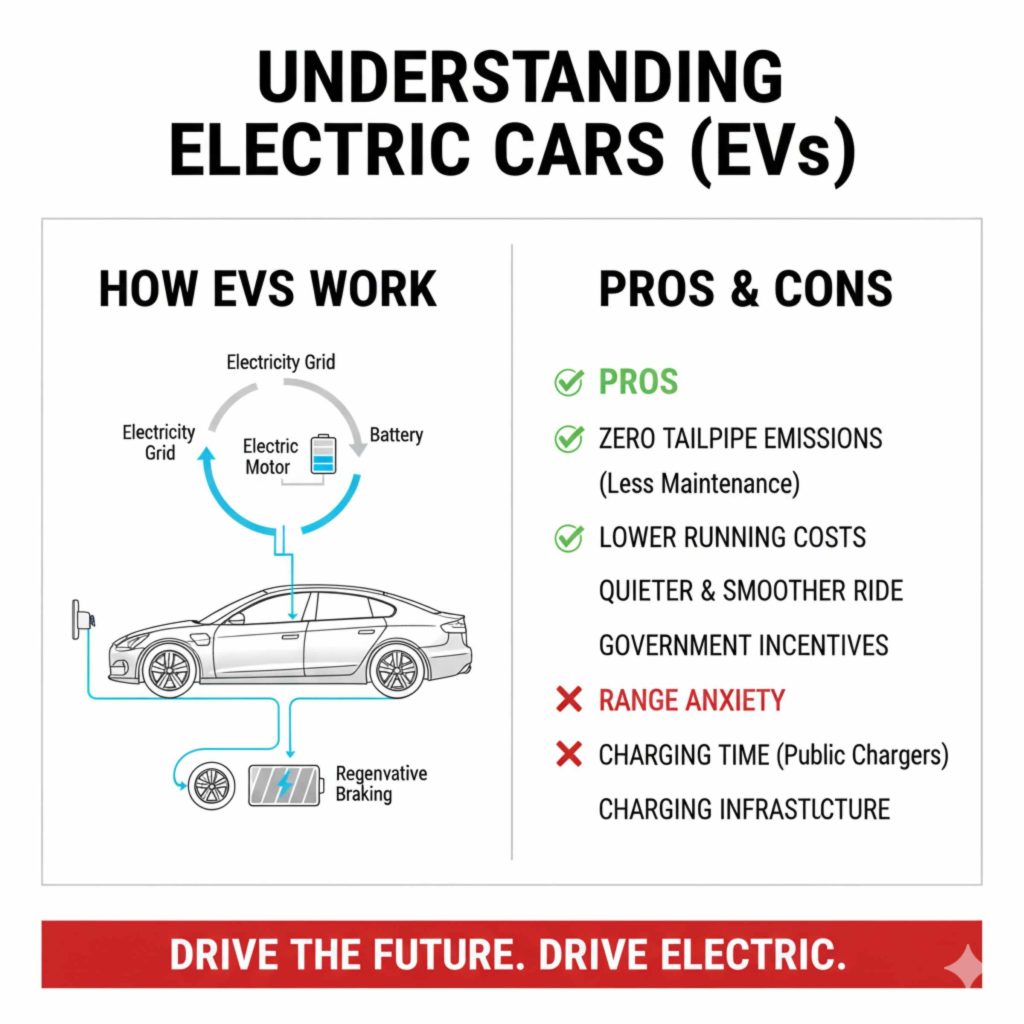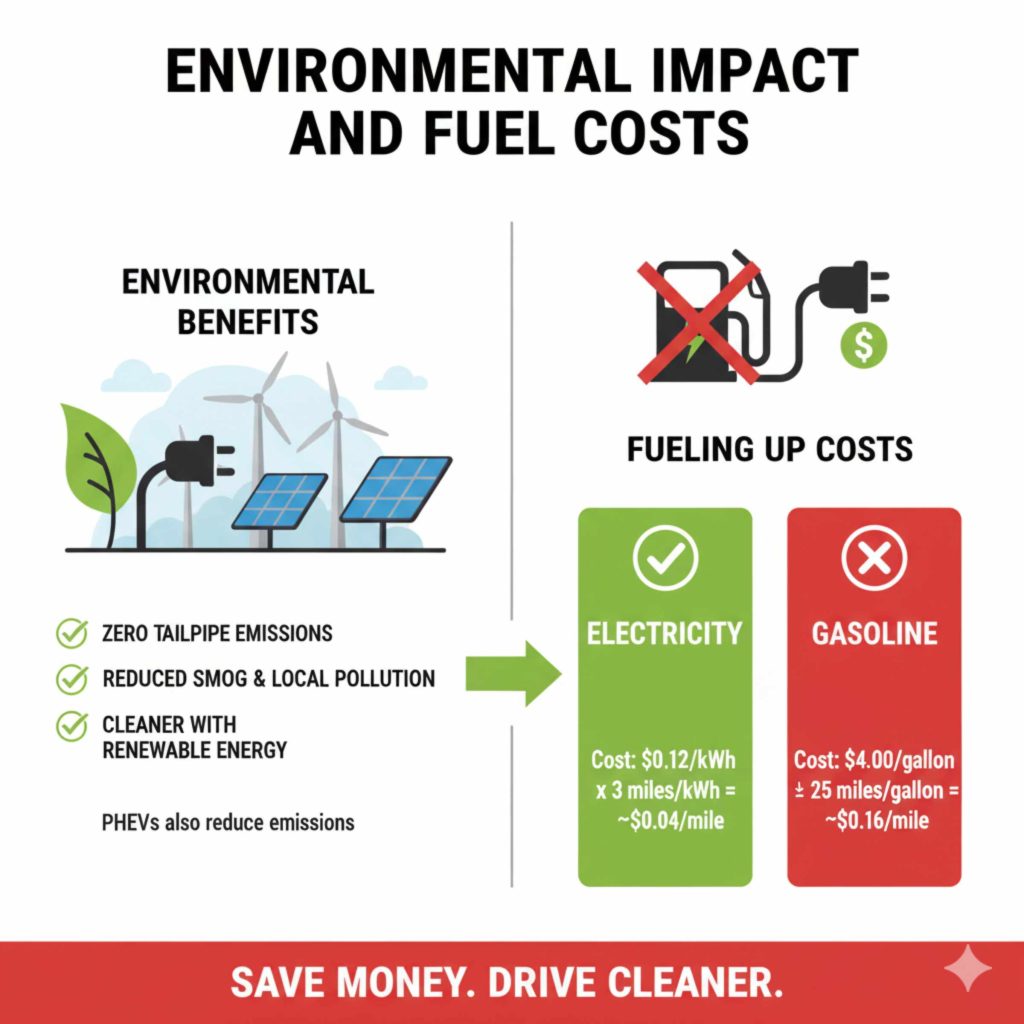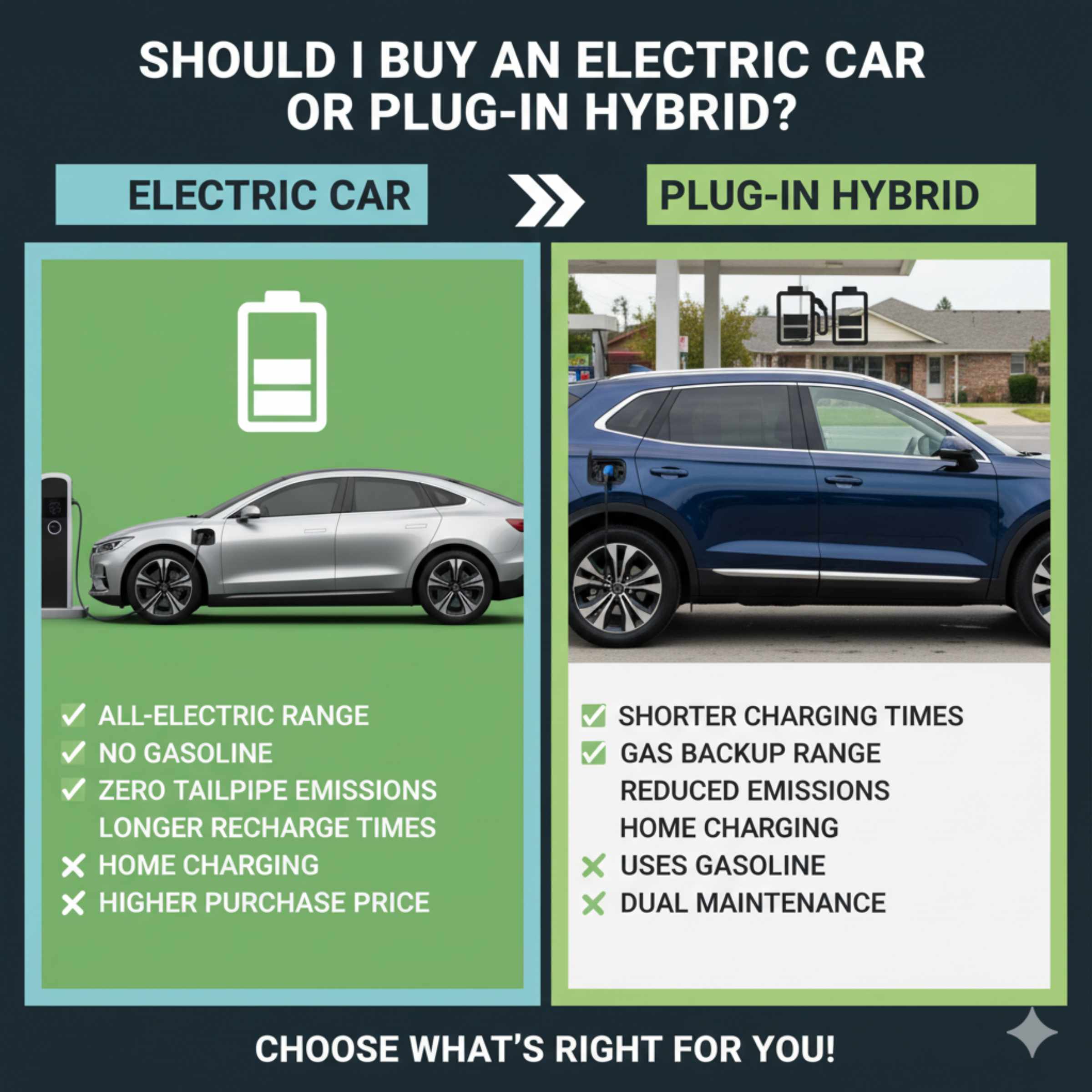Quick Summary:
Deciding between an electric car (EV) and a plug-in hybrid (PHEV) depends on your driving needs. EVs are best for those with predictable routes and access to charging, offering zero emissions. PHEVs provide flexibility with both electric and gas power, ideal for longer trips or areas with limited charging infrastructure.
Choosing a new car can feel like a big decision, especially with all the exciting new options available. Among these, electric vehicles (EVs) and plug-in hybrid electric vehicles (PHEVs) are getting a lot of attention. You might be wondering, “Should I buy an electric car or a plug-in hybrid?” It’s a common question, and it’s totally understandable to feel a bit unsure. The good news is, I’m here to break it down in a way that makes sense for everyday drivers like you and me. Think of me as your friendly guide, helping you navigate these new car technologies without getting lost in jargon. We’ll cover everything you need to know, so you can make the smartest choice for your wallet and your lifestyle. Let’s explore what makes each type special!
Understanding Electric Cars (EVs)
An electric car, or EV, runs entirely on electricity. It has a large battery pack that stores energy, which powers an electric motor to move the car. There’s no gasoline engine, no tailpipe, and therefore, no direct emissions. Think of it like a giant smartphone on wheels – you plug it in to charge it up, and it runs on that stored power.
How EVs Work
When you charge an EV, electricity flows from the power grid (or your home solar panels) into the car’s battery. This battery then sends power to the electric motor(s). When you hit the accelerator, the motor uses this electrical energy to turn the wheels. Regenerative braking is another cool feature. When you slow down or brake, the motor actually acts as a generator, capturing some of that energy and sending it back to the battery to recharge it a little. This helps extend your driving range.
Pros of Buying an EV
- Zero Tailpipe Emissions: This is a big one for the environment. You’re not putting any pollutants into the air while driving.
- Lower Running Costs: Electricity is generally cheaper per mile than gasoline. Plus, EVs have fewer moving parts (no oil changes, spark plugs, exhaust systems), meaning less maintenance and fewer repair bills over time.
- Quieter and Smoother Ride: Electric motors are very quiet and deliver instant torque, making for a smooth and responsive driving experience.
- Government Incentives: Many governments offer tax credits or rebates to encourage people to buy EVs, which can significantly lower the purchase price. For example, the U.S. government offers tax credits on eligible new clean vehicles. You can check the IRS website for current information.
- Home Charging Convenience: Imagine waking up every morning with a “full tank.” You can charge your EV overnight at home, just like your phone.
Cons of Buying an EV
- Higher Upfront Cost: EVs often have a higher sticker price than comparable gasoline cars or PHEVs, although incentives can help.
- Range Anxiety: This is the fear of running out of battery charge before reaching your destination or a charging station. While EV ranges are improving, it’s still a concern for some, especially on long road trips.
- Charging Time: While charging at home overnight is convenient, public fast chargers can still take 20-60 minutes to add significant range.
- Charging Infrastructure: While growing rapidly, public charging stations aren’t as widespread as gas stations yet, especially in rural areas or certain regions.

Understanding Plug-In Hybrid Electric Vehicles (PHEVs)
A plug-in hybrid electric vehicle, or PHEV, is a bit of a hybrid itself – it’s a blend of a traditional gasoline car and an electric car. It has both an electric motor powered by a battery and a gasoline engine. The key difference from a regular hybrid is that you can plug in a PHEV to charge its battery from an external source, allowing it to drive on electricity alone for a certain distance before the gasoline engine kicks in.
How PHEVs Work
PHEVs use electricity from their battery for everyday driving, typically for ranges between 20 to 50 miles, depending on the model. When the battery is depleted, or when you need more power, the gasoline engine takes over seamlessly, just like a regular car. You can then refuel with gasoline at any gas station. This dual-fuel system offers flexibility, allowing you to drive on pure electricity for your commute and then switch to gasoline for longer journeys without worrying about finding a charger.
Pros of Buying a PHEV
- Flexibility: This is the biggest advantage. You can enjoy electric driving for short trips and use gasoline for longer journeys, eliminating range anxiety and the need for frequent charging stops on road trips.
- Reduced Fuel Consumption: For daily commutes within the electric range, you can use very little or no gasoline, saving money on fuel.
- Lower Emissions (when driven electrically): When running on battery power, PHEVs produce zero tailpipe emissions.
- Easier Transition: If you’re not ready to go fully electric, a PHEV offers a gentler introduction to electrified driving.
- Existing Refueling Network: You can still use familiar gas stations, which is reassuring for many drivers.
Cons of Buying a PHEV
- More Complex System: Having both an electric powertrain and a gasoline engine means more components, potentially leading to higher maintenance costs over the long term compared to a pure EV.
- Lower Electric-Only Range: The electric-only range of PHEVs is usually much shorter than that of a pure EV. You might not be able to cover all your daily driving needs on electricity alone unless you charge frequently.
- Still Use Gasoline: You’ll still need to buy gasoline and deal with its associated costs and emissions when the battery is depleted or for longer trips.
- Battery Size and Weight: The battery in a PHEV is smaller than in an EV, but it still adds weight, which can affect fuel efficiency when running on gasoline.
- Charging is Still Required: To get the most benefit from a PHEV, you still need to plug it in regularly to charge the battery.
Key Differences at a Glance
To help you visualize the distinctions, here’s a table comparing EVs and PHEVs:
| Feature | Electric Car (EV) | Plug-In Hybrid (PHEV) |
|---|---|---|
| Power Source | 100% Electricity (Battery) | Electricity (Battery) & Gasoline (Engine) |
| Tailpipe Emissions | Zero | Zero (when in electric mode), Some (when engine is on) |
| Range | Typically 200-400+ miles (electric only) | Typically 20-50 miles (electric only), then gasoline engine extends range |
| Refueling/Recharging | Must be plugged into an electrical source | Can be plugged in to charge, or refueled with gasoline |
| Everyday Driving | Ideal for consistent electric driving if charged regularly | Can be used for short electric commutes, then gasoline for longer trips |
| Long Trips/Road Trips | Requires planning for charging stops | Runs on gasoline, similar to a conventional car; no range anxiety |
| Maintenance | Generally lower (fewer moving parts) | Potentially higher (both electric and gasoline systems) |
| Upfront Cost | Often higher, but incentives available | Typically between conventional cars and EVs; incentives may apply |
Which One is Right for You? Ask These Questions
Deciding between an EV and a PHEV really comes down to your personal driving habits and lifestyle. Let’s go through some questions that can help narrow it down:
1. How Far Do You Drive Daily?
- Short Commute (Under 40 miles round trip) with Home/Work Charging: An EV could be perfect. You might rarely, if ever, need to visit a gas station.
- Medium to Long Commute (Over 40 miles round trip) or Inconsistent Charging: A PHEV offers peace of mind. You can use electric power for the majority of your commute and switch to gas if needed.
2. Do You Take Frequent Long Road Trips?
- Yes, Often: A PHEV is likely a better fit. You can drive as far as you need without planning for charging stops along the way.
- No, Rarely: An EV is a strong contender. You can plan occasional long trips by using charging apps like ChargePoint or EVgo to find stations on your route.
3. Where Can You Charge?
- Have a Garage or Driveway for Home Charging: This is ideal for both EVs and PHEVs. Overnight charging makes owning either much more convenient.
- Rely Solely on Public Charging: An EV can still work if there are reliable public charging stations near your home or work. However, for PHEVs, diligent charging of the battery offers the most benefit. If public charging is sparse or inconvenient, a PHEV might be more practical as you always have the gasoline backup.
- Live in an Apartment or Condo with Limited Charging Options: This is where PHEVs often shine, as you can still rely on gasoline. If you’re set on an EV, research public charging availability in your area carefully.
4. What’s Your Budget?
- Looking for the Lowest Possible Running Costs (after purchase): An EV typically wins here due to cheaper electricity and less maintenance.
- Want to Save on Fuel but are Worried About Upfront EV Cost: A PHEV might strike a good balance, offering fuel savings for daily use with a potentially lower initial price than a comparable EV. Remember to factor in available government incentives which can apply to both.
5. What’s Your Willingness to Adapt Your Routine?
- Ready to Embrace Charging: An EV requires you to think about charging, similar to how you think about fueling your current car, but usually less often.
- Prefer a More Seamless Transition: A PHEV feels very similar to a gasoline car for longer trips, with the added bonus of emission-free driving when you charge it.
Making the Charging Experience Work for You
Whether you choose an EV or a PHEV, understanding charging is key. For both, charging at home overnight is the most convenient and often the cheapest way to ‘refuel.’
Home Charging
Most EVs and PHEVs come with a standard charging cord (Level 1) that plugs into a regular household outlet. This is slow but fine for overnight charging for PHEVs or for topping up EVs with shorter daily commutes. For faster charging, especially for EVs, many people install a Level 2 charger. This is similar to a dryer outlet and can fully charge an EV overnight, typically in 4-10 hours. You can find information on home charger installation and incentives from sources like the U.S. Department of Energy.
Public Charging
Public charging stations are categorized by speed:
- Level 1: Usually found in parking lots, these are very slow and similar to a standard home outlet.
- Level 2: More common, these are faster than Level 1 and can be found at workplaces, shopping centers, and public parking.
- DC Fast Charging (Level 3): These are the quickest, often found along major highways. They can add significant range (e.g., 200 miles) in just 20-30 minutes. These are primarily for EVs.
For PHEVs, Level 1 or Level 2 charging will replenish the battery. For EVs, the availability and speed of public charging become more critical, especially for longer journeys.
Environmental Impact and Fuel Costs
When we talk about electric and hybrid cars, the environment and saving money on ‘fuel’ are usually big motivators. Let’s touch on that.
Environmental Benefits
Pure EVs produce zero tailpipe emissions, meaning they don’t contribute to smog or local air pollution. Their overall environmental impact depends on how the electricity used to charge them is generated. If your local grid uses a lot of renewable energy (solar, wind, hydro), then driving an EV is incredibly clean. PHEVs also offer reduced emissions when driven in electric mode, but still have emissions when the gasoline engine runs.
Fueling Up Costs
Electricity is generally cheaper than gasoline per mile. The exact savings vary depending on local electricity and gas prices. For example, if electricity costs $0.12 per kWh and your EV uses 3 miles per kWh, it costs $0.04 per mile. If gasoline costs $4.00 per gallon and your car gets 25 miles per gallon, it costs $0.16 per mile. So, the electricity option can be significantly cheaper. PHEVs offer savings on gas when you leverage their electric range for daily driving, but you’ll still have gas costs for longer trips.

FAQ: Your Quick Answers
Q1: Will an EV or PHEV still need maintenance?
Yes, both will need maintenance. EVs typically require less maintenance because they have fewer moving parts (no oil changes, exhaust, belts, etc.). You’ll generally need to maintain tires, brakes, and windshield wipers. PHEVs have both an electric system and a gasoline engine, so they will require maintenance for both, including oil changes for the engine.
Q2: Can I charge an EV at a public gas station?
No, you cannot charge an electric vehicle at a gas station. Gas stations only dispense gasoline. You need to find dedicated electric vehicle charging stations, which are becoming increasingly common in many areas.
Q3: How long does the battery in an EV or PHEV last?
EV and PHEV batteries are designed to last for many years and hundreds of thousands of miles. Manufacturers often provide long warranties on batteries (e.g., 8 years or 100,000 miles) to give owners confidence. Battery degradation does happen over time, but it’s usually gradual.
Q4: Is an EV more expensive to insure than a regular car?
Insurance costs can vary widely based on the vehicle, your driving record, and your location. Some EVs might have higher insurance premiums due to their higher purchase price and repair costs, but this isn’t always the case. It’s always best to get quotes for the specific models you’re considering.
Q5: Can I use a regular extension cord to charge my EV if I don’t have a dedicated charger?
While you can use the Level 1 charging cord that comes with most EVs/PHEVs with a standard household outlet, it’s not recommended to use a regular extension cord. Standard extension cords are not designed to handle the sustained power draw safely. Always use the manufacturer-provided charging equipment or a certified Level 1/Level 2 charging station.
Q6: Do electric cars perform worse in cold weather?
Yes, cold weather can affect EV battery performance and range. Batteries are less efficient when cold, and the heating system inside the car uses energy. However, modern EVs have systems to manage battery temperature, and range reductions are typically in the 10-40% range in very cold conditions. PHEVs might have less of an impact on their electric range when using the gasoline engine for heat.
Conclusion
Choosing between an electric car and a plug-in hybrid is a personal journey, and there’s no single “right” answer for everyone. If you envision a future of emission-free driving, have predictable daily routes, and access to reliable charging, a pure electric vehicle (EV) could be your perfect match. The lower running costs and smooth, quiet ride are fantastic benefits. On the other hand, if you crave flexibility, often take longer trips, or have less certainty about charging availability, a plug-in hybrid (PHEV) offers a brilliant compromise. It lets you enjoy electric driving for your commutes while keeping the trusty gasoline engine as backup for those farther adventures.
Think about your daily mileage, your travel habits, where you can power up, and what fits your budget. By considering these factors, you can confidently step into the world of electrified driving. Both EVs and PHEVs represent exciting advancements in how we travel, offering more sustainable and often more economical ways!

